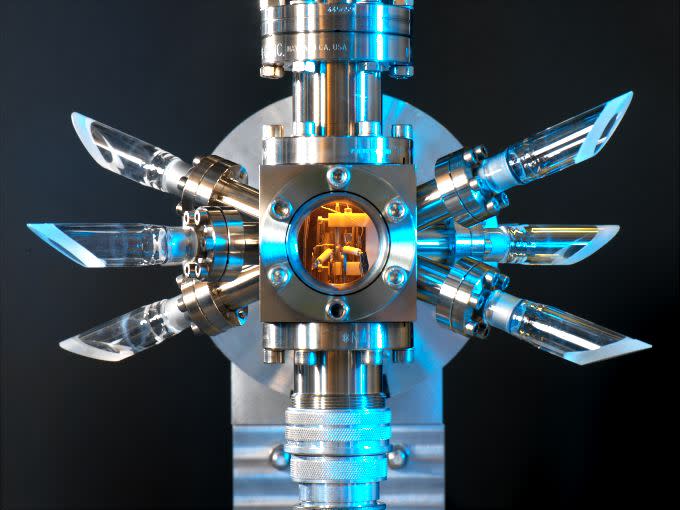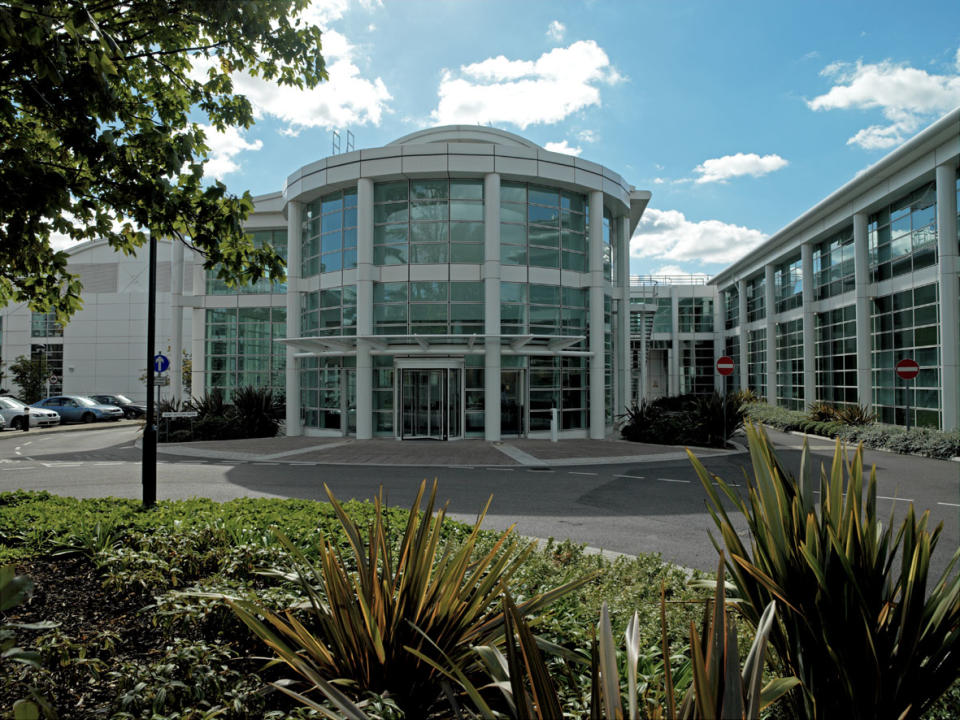The British lab testing a clock so accurate it could redefine the second in the next two years

Tucked away at the National Physical Laboratory in Teddington, south-west London, there is a clock which takes up most of a room – and which is so accurate it could actually redefine the second.
At the heart of the clock is an ion of strontium, trapped by a ‘lattice’ of lasers inside a vacuum, with its orbiting electrons working like a pendulum.
It’s so accurate that had it been ticking since the beginning of the universe, 14 billion years ago, it would only have lost or gained one second.
Before this decade is over, it (and other clocks like it) might have redefined low long a second lasts, says one of the experts working with the machine.
The point of this remarkable device isn’t just to measure time, however.
Instead, the ultra-fast oscillator could open new frontiers in science, being used for space navigation, and even to ‘sense’ gravity, according to Leon Lobo Strategic Business Development Manager, Time and Frequency, at the laboratory.
MOST POPULAR ON YAHOO UK TODAY
Airborne laser scans find Mayan ‘megalopolis’ under the jungle in Guatemala
‘Evasive’ woman jailed after helping paedophile boyfriend to rape schoolgirl twice
This ‘cartoonish’ sketch released by police may look like a joke – but it actually worked
Quincy Jones says The Beatles ‘were the worst musicians in the world’
Watch: Angry commuter demands blind man to move guide dog on tube escalator
Flat Earth Society issues statement after Elon Musk launched a car into space
It could also lead to GPS systems which are accurate down to the centimetre, paving the way for a new generation of self-driving cars and drones.
‘The clock is so accurate that you could use it to detect gravity waves,’ says Lobo,
‘If you were to raise it by a centimetre, the accuracy would change. You could use it as a mobile gravity detector, to detect sinkholes under the ground, or measure the sea level with high accuracy.’

The clock is not unique: it’s one of dozens around the world using similar technology, known as ‘optical atomic clocks’ or ‘optical lattice atomic clocks’.
They ‘tick’ much faster than traditional microwave atomic clocks, a network of which provide the official global definition of the second today, Lobo explains.
Britain’s National Physical Laboratory unveiled the first microwave atomic clock in 1955, and it became the basis of the official definition of a second a decade later.
Previously, seconds had been based on ‘mean solar time’, a mathematical calculation based on the passage of the sun over the meridian at noon.
But irregularities in Earth’s rotation mean that’s imprecise: hence the switch to atomic clocks, and the subsequent drive towards more and more accurate models.
‘The optical atomic clock measures electronic transitions of particular species of atom,’ Lobo says, ‘At NPL we use strontium and ytterbium.
‘You can use the frequency of that signal as a regulator. It’s very, very stable.’

‘The optical clock is the next generation of clock, which will take us beyond the definition of a second that we use globally.
‘The current international definition under the International System of Units is based on caesium, which oscillates at 9.2 billion cycles per second. But the optical clock operates at five orders of magnitude higher frequency.’
Because optical atomic clocks operate at such high frequencies, they can ‘split’ seconds into far smaller fractions – trillions per second.
It could lead to much more accurate satellite navigations, with satellites able to triangulate positions down to the centimetre.
In space, it could allow craft to navigate more precisely – and could also be used to measure the environment with unbelievable precision.

‘The better the clock, the more it can be used to measure how the environment is disturbing the clock itself, Lobo says.
Laboratories around the world are developing both portable versions of optical atomic clocks and room-sized versions.
The atomic clock in Teddington has been there since 2004, and is now connected to others on the continent, as scientists work together to create a new definition of the second.
Since 1967, the ‘official’ time on Earth – International Atomic Time – has been measured by a network of atomic clocks, and averaged for even more accuracy.
International Atomic Time is used as the basis for Coordinated Universal Time, which is used to set computer clocks around the world.
The official definition of a second is ‘the duration of 9,192,631,770 periods of the radiation corresponding to the transition between the two hyperfine levels of the ground state of the caesium 133 atom.’
But optical atomic clocks could supersede it, providing labs in many countries develop a standard they can agree on, Lobo says.
Lobo says that the clock in Teddington is now connected to German and French labs via optical fibre: satellites are simply not fast enough.
‘There’s a big drive now to compare the signals from all these clocks,’ Lobo says. ‘You can only judge the stability of these clocks by comparing them to another clock.
‘You could have the best clock in the world, but the best way to ensure its frequency is accurate is to compare it to another similar clock with a similar species of atom.
‘Once you do, it’s actually a huge confidence boost.’
As labs around the world ‘connect’ and share their research, the new definition of a second moves closer, Lobo says.
‘For a new definition of a second, the big question is, ‘Can it be replicated? Can it be developed by many different labs?’ There’s no point if it’s only one lab.’

 Yahoo News
Yahoo News 

